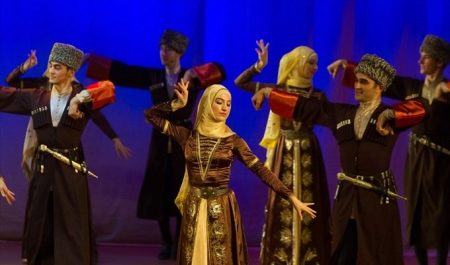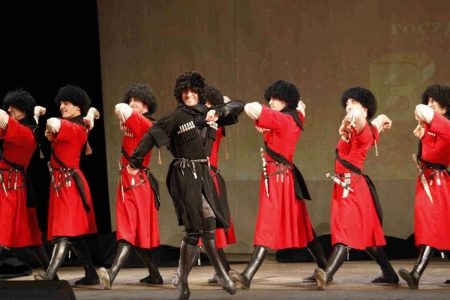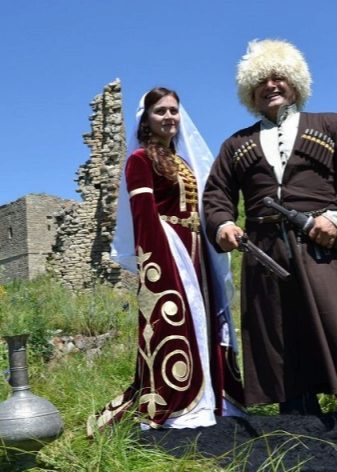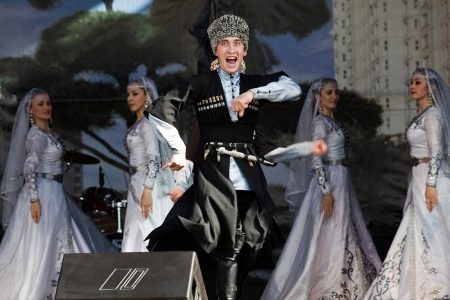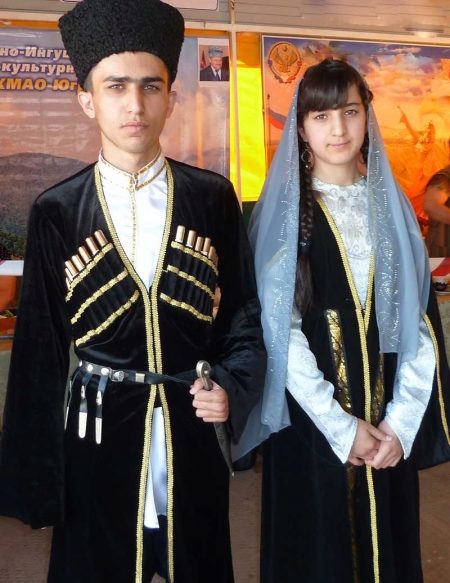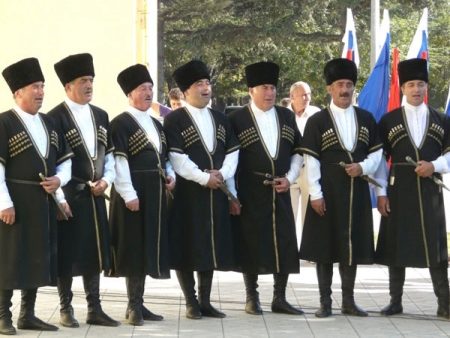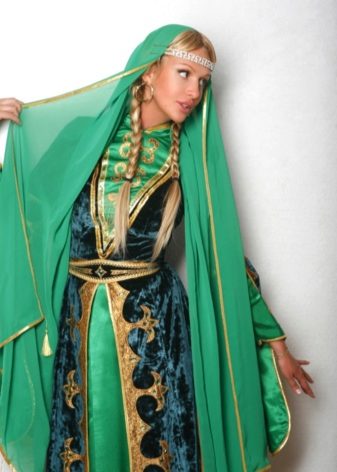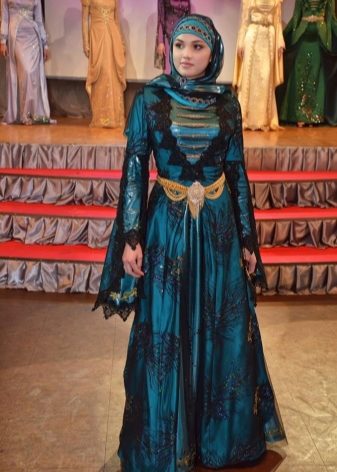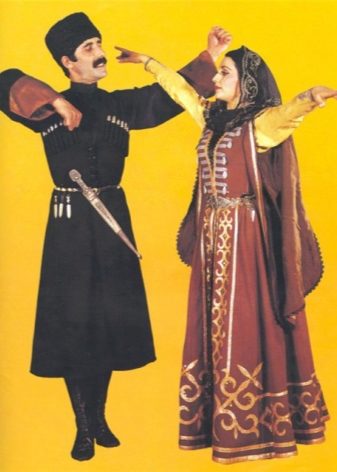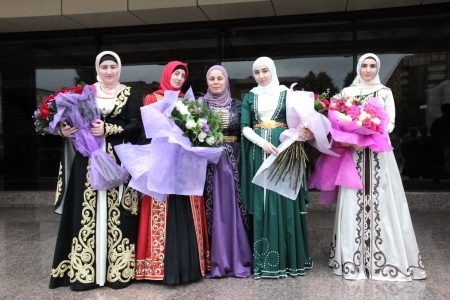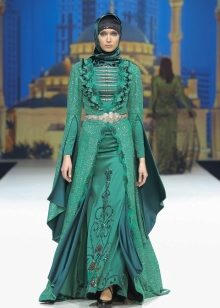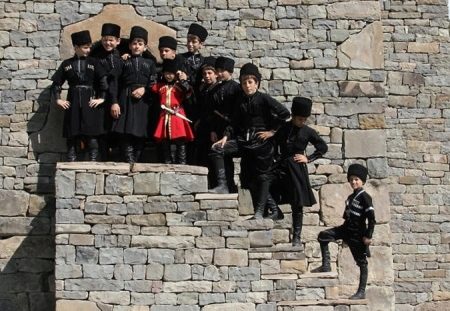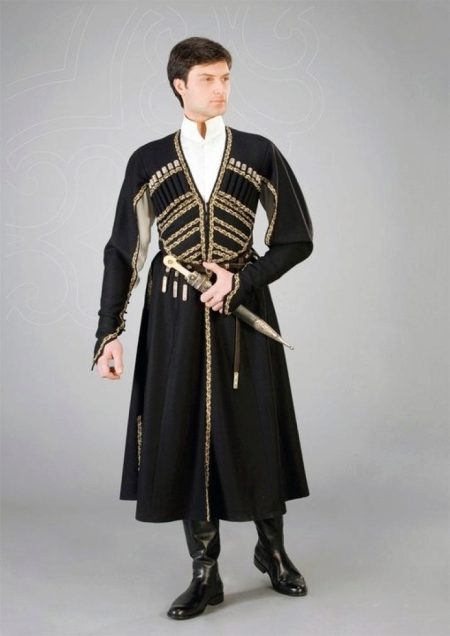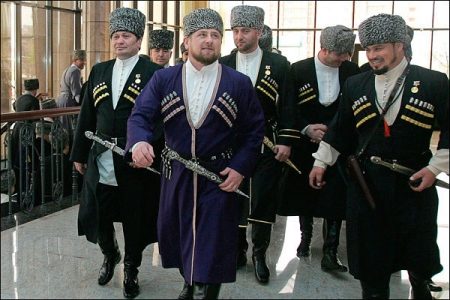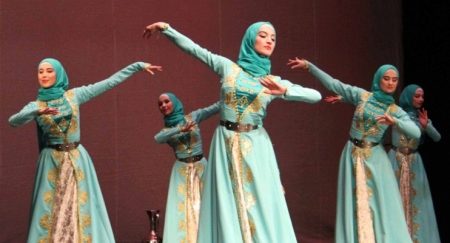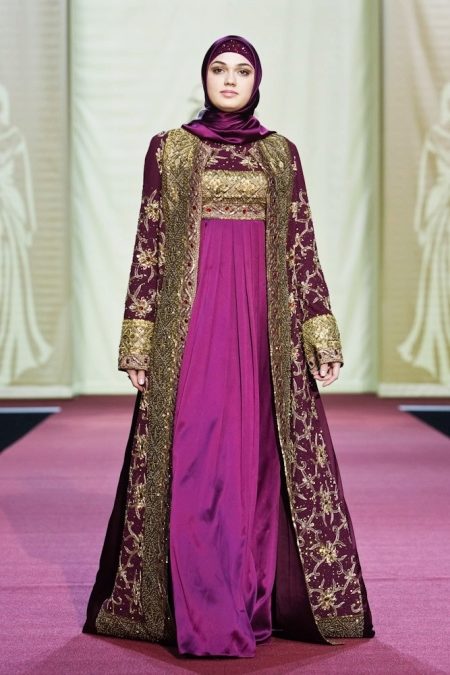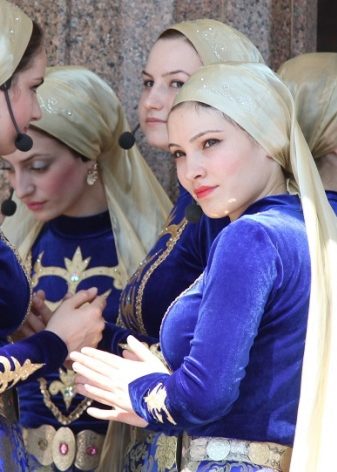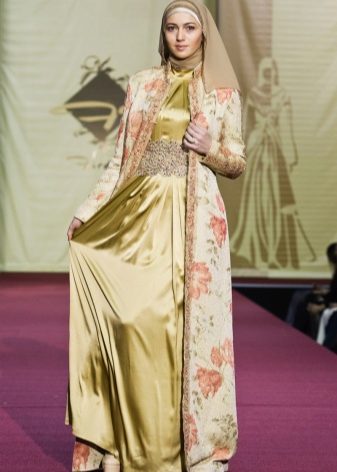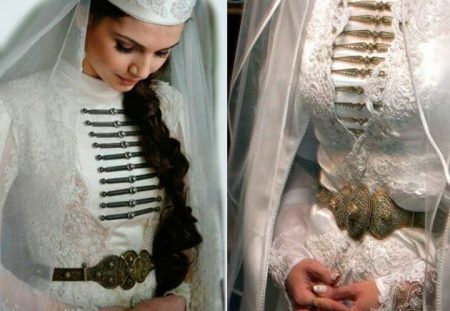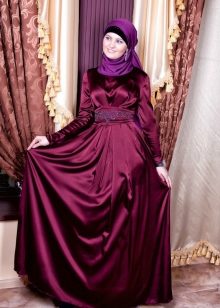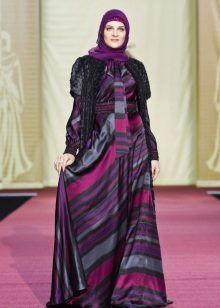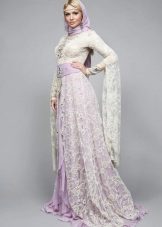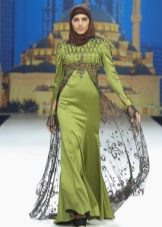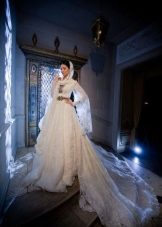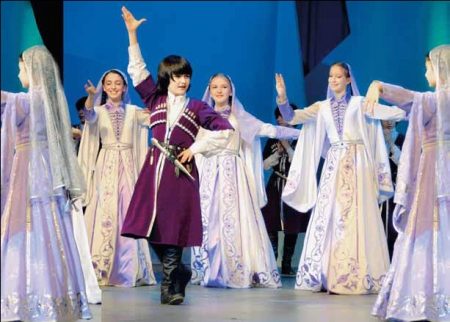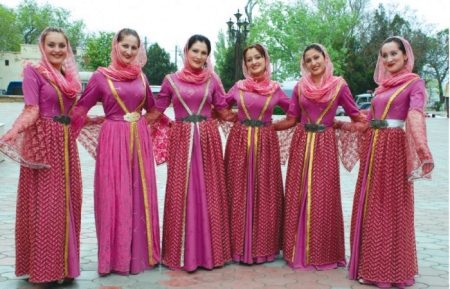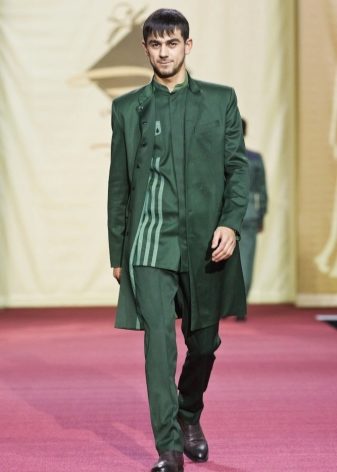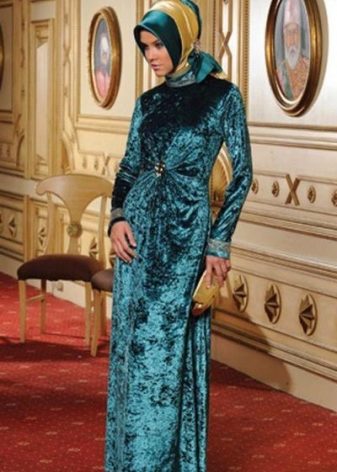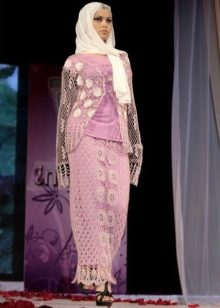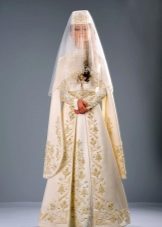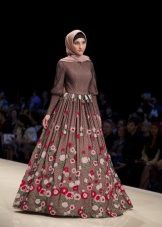Chechen national costume

A bit of history
The history and culture of each nation is original and unique, and the national costume is their inseparable part. The living conditions of the people, geographical and climatic characteristics, beliefs, social and economic situation influence how the costume will look and what materials it will be made of.
Chechen national costume is no exception.
Since ancient times, Chechens were engaged in sheep breeding, and wool, fur, animal leather were used to make clothes and shoes. Homespun cloth and felt were widely used.
Details of the costume are not only a decorative function, but are also a historical reflection of the life of the Chechens.
In soft leather boots it was convenient for shepherds and warriors to walk in the mountains.
Daggers and weapons were attached to the belt.
Mandatory in the Chechen national costume hat, which is sewn from sheepskin. She is a symbol of masculinity, and to touch a cap is to insult a man. At the same time, it perfectly protects against cold or overheating in the bright sun.
Varieties
The Chechen national costume exists in two versions - male and female.
Children's costumes, especially festive ones, were repeated. Small difference - boys under 14 did not wear daggers.
Features
The basis of the men's suit are beshmet and pants, tapering to the bottom. Pants tucked inside the boots. Behmet is a special cut semi-caftan, whose length is about 10 centimeters above the knee.
For holidays, Circassian clothing is worn over this semi-caftan. It does not have a collar, and it fastens only on the belt.
Its distinguishing feature is the presence of so-called gas wells on both sides of the chest - small pockets for weapons charges. Although the emergence of new types of weapons eliminated the need for gas tanks, they remained in the Circassian as a decorative element.
A special detail of the costume is the burka. She looks like a cape with narrowed shoulders. Its purpose is to protect from the weather, at night it served as bedding and a blanket.
Components of women's attire - a dress-tunic, top dress, belt and shawl. The length of the dress-tunic comes to the ankles. Under this dress, women wear wide wide trousers, the legs of which are gathered at the ankles. A distinctive feature of women's dress - bibs and very long sleeves, covering the fingers. In festive dresses the length of the sleeves could reach the floor.
In the manufacture of bibs used precious metals and stones.
Top dress is like a robe or a cape. The clasp is only on his waist, to keep bibs in sight.
Colors and shades
The color palette of everyday men's wardrobe was usually reserved dark tones - black, gray, brown, brown. Beshmet could be a different color, reviving the costume. The festive beshmet was sewn from multi-colored shiny fabrics. The white color in clothes testified to the wealth of a person.
Women's clothing had a great variety of colors.
The dress tunic was, as a rule, monophonic. But the brightest colors and shades were allowed.
Fabric and cut
Pants and beshmet were sewn from durable lightweight fabric - they should not have restrained movements. Beshmet is tailored to the body of a man and fits snugly to the torso. Below the waistline it becomes extended. This cut emphasizes slimness, strength, manliness of a man. Narrow comfortable pants taper to the bottom, they are easy to fill in the boots.
Buttons made of woven straps fasten from the neck to the waist beshmet.The stand-up collar almost completely closes the neck and fastens with the same buttons. Sleeves beshmet long, tapering to the brush and can end with cuffs. They also have similar clasps.
The Circassian cut coincides with the cut of the beshmet. Since this is a festive look of clothing, it is sewn from more expensive materials. Circassian length below the knee.
Women's tunic dress was sewn of light cotton fabric or silk. It had a stand-up collar that was buttoned.
Festive pants were trimmed with silk at the bottom.
The top dress has a similar cut with a Circassian, differing in length from the floor. It is hinged, it has no collar, it is fastened only at the waist, and the chest remains open.
Luxurious expensive fabrics were used to make the upper dress: satin, brocade, velvet. They were richly decorated with embroidery, braid. They could have folds and frills. However, only young women wore very bright dresses.
Accessories and shoes
The belt is an obligatory piece of clothing for men and women. Women were decorated with buckles, silver, precious stones. The most beautiful belts were inherited.
The shawl is part of the female attire. The girls are lightweight fabric. Married women wore a chukhu - a special bag where they put their hair, and a scarf with a fringe was put on top of it.
The fair sex has always worn jewelry. These are various bracelets, beads, rings, rings and pendants. Earrings could be in the form of rings. Temporary pendants were common. Also, the decoration can be considered buttons on the top women's dresses.
Initially, jewelry was made of bronze, and later they began to use silver.
Chechen men’s traditional casual shoes were soft leather boots. Their length reaches almost to the knees. Rich people often wore dudes (a kind of soft shoes without heels), and on their lower legs they wore saffiano legs on top of their pants.
The sole of shoes, as a rule, was not rigid, which was very convenient for riders and backpackers in the mountains.
Women's shoes were more diverse. For its manufacture used leather, morocco, felt, wool.
Often worn a kind of leather slippers as a home and outlet shoes.
Young women also wore shoes without backs. They had a hard sole and heels. Some women wore morocco boots. They also had a heel and could have decorations.
Another type of shoe - shoes. They were sewn along the leg from several pieces of leather and looked very elegant.
Modern models
To date, the Chechen national costume has not changed significantly.
Of course, modern Chechens, especially young people, do not wear it everyday, preferring urban fashion. However, many men wear a national headdress - a hat, while remaining loyal to the traditions. Older men continue to wear beshmet and Circassian.
However, national traditions can be traced in modern fashion - Caucasian shirts with a stand-up collar are common.
In women's fashion tradition can be traced brighter. On older women you can see wide dark dresses and harem pants.
Young women and girls dress modernly. But you are unlikely to see a Chechen woman in a short skirt, in a dress with bare shoulders or a deep neckline.
Wedding attire is sewn, as a rule, in the national style. It necessarily consists of a bottom shirt and a top dress. The latter always has a cut in the front, it is richly decorated and embroidered. The main decoration is a silver belt.
The Chechen national costume is widely used by theater groups as a stage costume. Incendiary lezginka is unthinkable in any other outfit. And we have a great opportunity to appreciate the beauty of this garment.
